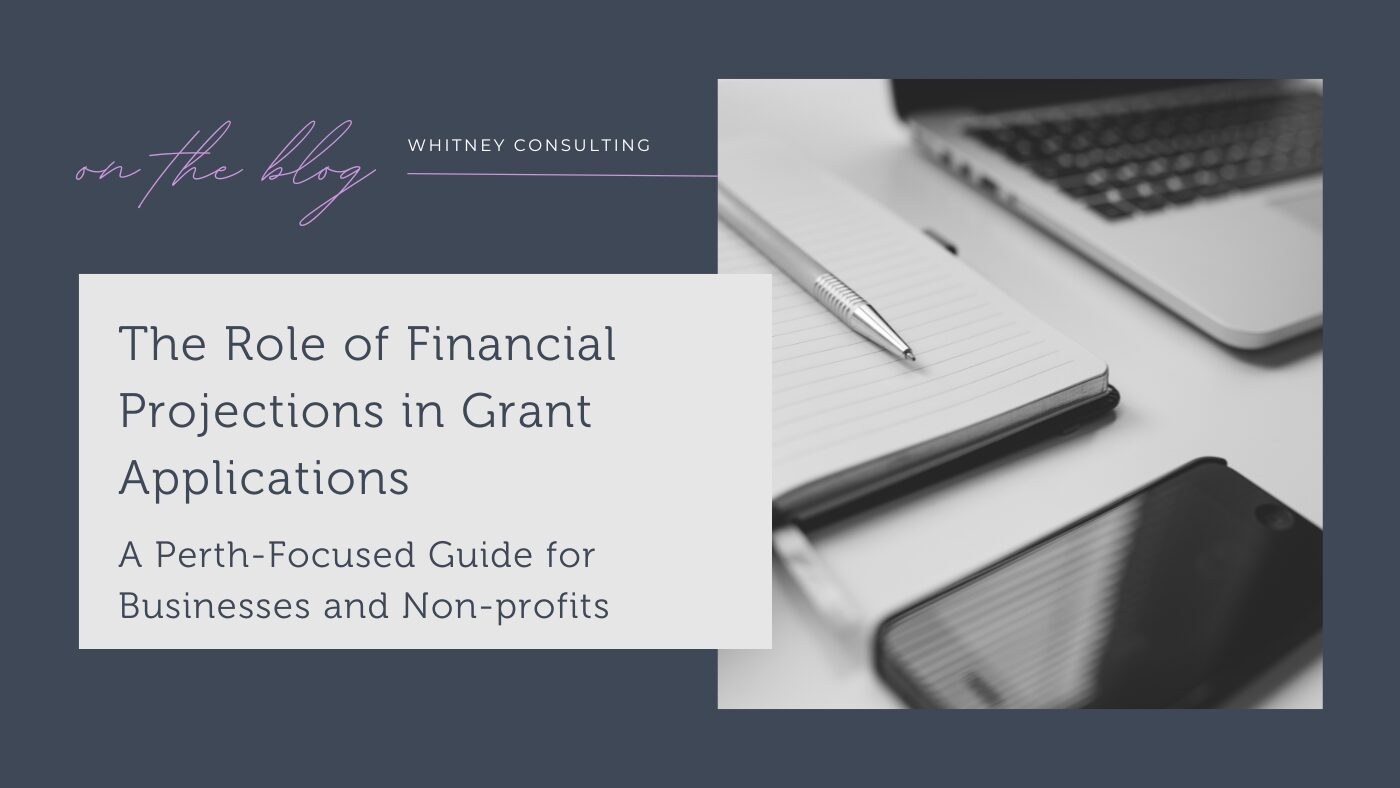For businesses and nonprofits in Perth seeking grant funding, financial planning plays a crucial role in securing approval. Grant providers assess applications based not only on the feasibility of the project but also on the applicant’s ability to manage funds effectively. Two essential financial components are required for a successful grant application: a project budget and financial forecasts.
A project budget outlines the costs associated with executing the proposed initiative, detailing how funds will be allocated and where the money is coming from (e.g., grant funding, co-contributions). Meanwhile, financial forecasts demonstrate the sustainability of the project after completion, showing that the investment will yield long-term benefits.
Many applicants confuse these two elements, but understanding their distinct roles is critical for developing a compelling grant application. This guide will break down both components and provide insights for Perth-based and regional WA businesses and non-profits.
1. Understanding the Project Budget
A project budget is a financial plan for the execution phase of a grant-funded project. It shows how much the project will cost and where the funds will come from. Grant assessors use this document to determine whether the requested funding is justified and if the project is financially viable.
Key Components of a Project Budget:
- Total Project Cost: The overall cost of completing the project, including materials, labour, and other necessary expenses.
- Funding Sources: A breakdown of how the project will be financed, such as grant funds, private contributions, sponsorships, or in-kind support.
- Expense Breakdown:
- Labour costs (e.g., salaries, contractor fees)
- Equipment and materials
- Marketing and outreach
- Administrative costs
- Contingency funds for unforeseen expenses
- Expense Breakdown:
Why a Strong Project Budget Matters
A well-structured project budget helps:
- Prove that the funding request is reasonable and well-planned.
- Demonstrate that the applicant understands the financial aspects of the project.
- Assure grant providers that the project will be executed within the allocated budget.
Common Mistakes in Project Budgets
- Underestimating costs, leading to funding shortfalls.
- Failing to show co-contributions, making the project appear overly reliant on grant funding.
- Lack of detail in expense breakdowns, reducing credibility.
- Lack of evidence to support the costs, such as quotes.
2. Financial Forecasting: Demonstrating Post-Project Sustainability
While the project budget focuses on execution, financial forecasts demonstrate the viability of the project beyond the grant period. Grant providers want to ensure that the project will continue to generate impact even after the funding ends.
Key Types of Financial Forecasts:
- Profit and Loss (P&L) Forecast
- Projects future revenue and expenses.
- Demonstrates whether the project will generate a surplus or require additional, ongoing funding.
- Profit and Loss (P&L) Forecast
- Cash Flow Forecast
- Tracks expected cash inflows and outflows.
- Ensures the project remains financially stable and can sustain operations long-term.
- Cash Flow Forecast
How Financial Forecasts Strengthen Grant Applications
- Demonstrating Self-Sufficiency: Shows that the project will not require ongoing grant support.
- Proving Long-Term Value: Helps grant providers see the lasting impact of their investment.
- Reducing Risk: Well-prepared forecasts assure funders that the applicant has a clear plan for sustainability.
Examples of Financial Forecasting in Action
- A nonprofit building a community centre must show revenue from rental fees, memberships, or events to sustain operations.
- A startup launching an innovative product needs sales projections to prove its long-term viability.
3. Project Budget vs. Financial Forecast: Why Both Matter
| Aspect | Project Budget | Financial Forecast |
| Focus | Execution phase costs | Post-project sustainability |
| Timeframe | During project implementation | After project completion |
| Key Elements | Total cost, funding sources, expenses | Revenue, profit/loss, cash flow |
| Purpose | Ensuring proper fund allocation | Demonstrating long-term viability |
How Grant Assessors Use Both
- The project budget verifies that funding is allocated efficiently and covers all necessary costs.
- The financial forecast ensures the project will continue to operate successfully without needing ongoing financial support.
4. Tips for Preparing Strong Financial Projections in Grant Applications
Creating a Solid Project Budget
- Research industry benchmarks to estimate costs accurately.
- Include a contingency buffer for unexpected expenses.
- Clearly state all funding sources, including in-kind contributions.
- Obtain evidence of costs, such as quotes or a Quantity Surveyor estimate.
Developing Realistic Financial Forecasts
- Base projections on market research, historical data, and realistic growth expectations.
- Align financial forecasts with business or nonprofit goals.
- Use financial software or consult a professional to create detailed forecasts.
Avoiding Common Pitfalls
- Overly optimistic revenue projections without evidence.
- Overly conservative revenue projections that indicate limited project benefits.
- Ignoring potential risks that may impact financial sustainability.
- Lack of clarity in how post-project income will be generated.
5. Perth-Specific Considerations for Grant Applications
Both Perth and regional WA businesses and nonprofits must consider local economic conditions and funding requirements when preparing financial projections.
Understanding Local Grant Opportunities
- Government funding programs, such as WA business grants and nonprofit support initiatives.
- Industry-specific grants for innovation, sustainability, and community projects.
Key Trends Impacting Financial Projections
- Rising operational costs in Perth and regional WA due to inflation and supply chain disruptions.
- Increased focus on sustainable and socially impactful projects.
- Preference for projects that create long-term employment and economic benefits.
Successful Perth-Based Grant Projects
- A hospitality business that secured a grant to build a café and provided revenue projections to demonstrate sustainability.
- A social enterprise that developed a financial model showing long-term impact and profitability.
Sealing the Deal: How Financial Projections Secure Your Grant Success
A successful grant application requires both a well-structured project budget and robust financial forecasts. While the project budget details how funds will be spent during implementation, financial forecasts prove the long-term sustainability of the project after completion.
Perth-based businesses and nonprofits should take the time to develop detailed and realistic financial projections, ensuring they meet grant requirements and increase their chances of securing funding. By demonstrating both short-term financial responsibility and long-term viability, applicants can build a compelling case for why their project deserves support.
Investing in strong financial planning will not only improve grant success rates but also set the foundation for a sustainable and impactful project.






